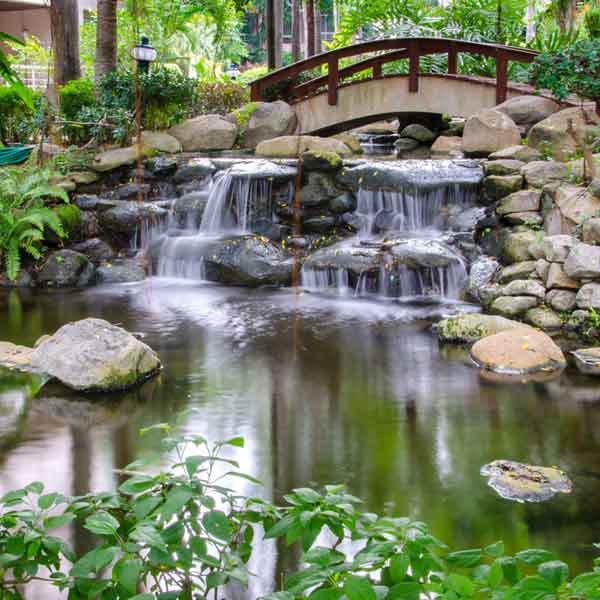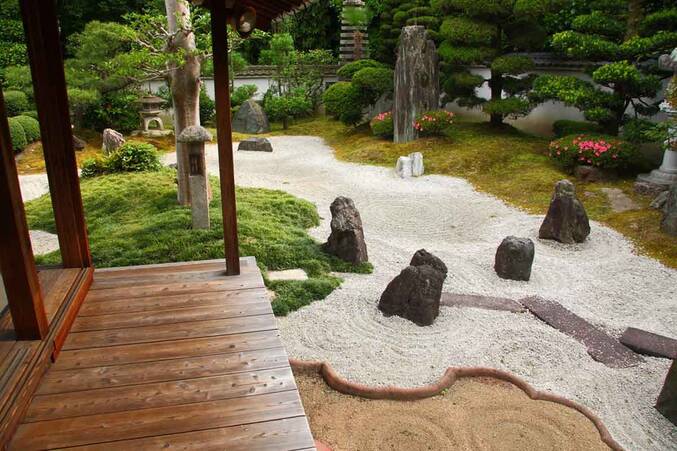Photograph: Shutterstock
A Japanese zen garden is harmonious with nature and works directly with what nature has provided, bringing a sense of harmony and oneness to the natural landscape. In a zen garden, special place is given to every plant, rock and sand; giving it a deep meaning. Landscape architect Shweta Agrawal Suhane demystifies the elements of a zen garden.

1 Rocks and stones:
Rocks in a zen garden represent islands or rock formations coming out from the water. This ensures a coastal like scenery is recreated.

2 Sand (Suna):
Raked sand mimics rivers, seas or streams that a subject can use for meditation and contemplation. The raking of the sand is intended to suggest waves or currents.

3 Water (Mizu):
Water is designed as a source of purification and refreshment. However in zen gardens, living water is not present. Sand, rocks and moss replicate lakes, streams and sometimes waterfalls, in what came to be known as karesansui or dry landscape garden.

4 Plant (Ki and Hana):
Plants like pine, bamboo, plum moss, azalea, etc are used with a symbolic representation to bring an obvious and profound beauty to these gardens. Pine trees help enlighten monks on permanent truth through evergreen leaves in contrast to the ever-changing nature of human life. Moss and azalea plants are used to represent the appearance of nature. Many a times, moss implies the image of the ocean, waves or forested hilly areas with its fine needles arranged from the stem. Azalea shrubs represent the mountains filled with flowers during its blooming season in contrast to the rocky mountains, which are represented by rocks in zen gardens.

5 Waterfall (Taki):
A waterfall has philosophical implications. It symbolizes the permanent impermanence of the universe -- likens a river, which is always changing but its essence remains the same.

6 Bridge (Hashi):
In the zen context the bridge represents the journey towards enlightenment. In simple ways it represents a transitional pathway from the world of man to the larger world of nature-nirvana.


















